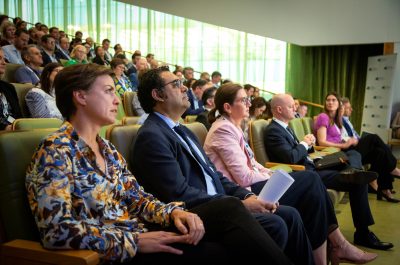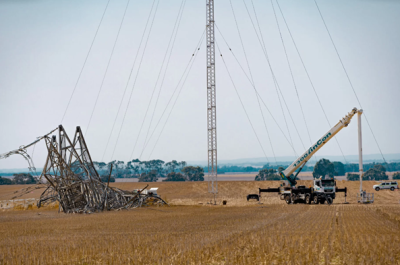Dear Santa, from the energy sector
The festive season is upon us and what better way to celebrate than a wish list for Santa Claus where future-proof choices that benefit energy customers are plentiful. While the energy transition pushes forward, it’s important the entire sector comes along for the journey, with customers well and truly in the driver’s seat.
Continuing and improving industry engagement
A constant throughout the year has been the emphasis on customers, who are the reason the industry exists. While there is always room for improvement, we’re thankful the bad old days of simply ‘informing’ are out and collaboration is in, especially with customers who should have the biggest say in what better outcomes look like.
We believe genuine engagement between industry, market bodies and customers is the best way to deliver beneficial long-term outcomes and customers should always have a seat at the table.
Can we get the plan right?
Clearly, we’re not in agreement anymore when it comes to energy policy. The actionable Integrated System Plan was Australia’s opportunity to commit to nationally coordinated transmission and generation policy, but the opportunity is under threat with Vicxit and NSW taking their own paths. Meanwhile the Federal Government is seeking advice on a national gas infrastructure plan.
Neither national plan is really harnessing the great synergies that exist between the gas and electricity networks, nor are piecemeal state plans best placed to look at the big picture.
The question now is whether state policies can sufficiently integrate with iterative national plans to deliver a workable energy transition. Either way, we need a master plan for the transition to renewables and it is crucial that well considered state policy complements national energy action.
Regulatory framework adapting to the energy market transition
Keeping pace with the energy transition is challenging. New problems arise weekly, but with them come new solutions. The hardest job of the regulatory framework is keeping up, let alone preparing for future issues and getting on the front foot.
The Distributed Energy Integration Program is an opportunity for the regulatory framework to evolve to ensure that distributors can continue to enable the customer-driven transition to distributed energy. Another opportunity is getting ring-fencing right and allowing network businesses to provide innovative solutions that are in customers’ long-term interests. Pursuing innovation is only becoming more important as technological advancements make devices like batteries for network support and stand-alone power systems all the more viable.
Better access to data
Power of Choice promised to empower customers with data and freedom, but barriers in the form of a slow metering roll-out and lukewarm-at-best service offerings for customers have resulted in a stagnating framework.
Networks have minimal access to data from smart meters to make more informed decisions about their network. With the AEMC’s review of Power of Choice and the ESB’s Data Strategy shining light on the issue, hopefully more data will be available to networks and some of the promised customer benefits can be realised.
Ensuring the regulatory package fits together
Financeability is emerging as an important issue for attention in 2021 – both around new investment across existing electricity and gas networks and for ISP projects. There are some concerning signs emerging. For example, recent network determinations are resulting in the benchmark network receiving negative net profit after tax and credit metrics that fall below those required to maintain investment grade credit ratings.
There are several drivers for this. Substantial recent reductions in regulated returns on equity, once-in-a-century historically low risk-free rates and current inflation estimation approaches are putting pressure on existing credit ratings. A proportionate and pragmatic solution must be established as these issues become more apparent to ensure the regulatory package continues to fit together logically.
Build it and they might come?
Build it and they will come is all well and good except if the market shifts and there’s a good chance they won’t actually arrive. This is a challenge for delivering transmission that aligns with new generators in an evolving energy market. Alternatively, generators can build their own extensions to the shared transmission network – in fact anyone can – but this model hasn’t been successful.
A new model has been proposed where generators own and build their own transmission assets and pass the operation and maintenance on to primary transmission businesses. That way customers don’t pay until the assets are operational and the risk of generators not coming along is negligible. Whether it’s workable is a question for 2021.
Demonstration of renewable gas blending
A number of renewable gas projects under construction and being commissioned in Australia are due to commence renewable gas blending in 2021. These initial projects, incorporating community buy-in, are the necessary first steps to ensure full decarbonisation of gas networks as articulated in our Gas Vision 2050 plan.
Similarly, gas customers are seeking options for net-zero emissions gas, whether it be biomethane or hydrogen. It is in customer interests that governments prioritise development of a green gas scheme to encourage renewable gas to be blended in networks and for customers to be able to purchase it. We’ve seen NSW and WA already adopt 10 per cent hydrogen blending targets.
Progress for DER technical standards
Rapid distributed energy resources’ (DER) uptake comes with issues to solve, such as developing nationally consistent DER technical standards. Current attempts to address the issue have been piecemeal and had varying success, while independent national leadership has been scarce. The Energy Security Board’s proposal for an advisory body led by the AEMC is the best opportunity to address this problem.


